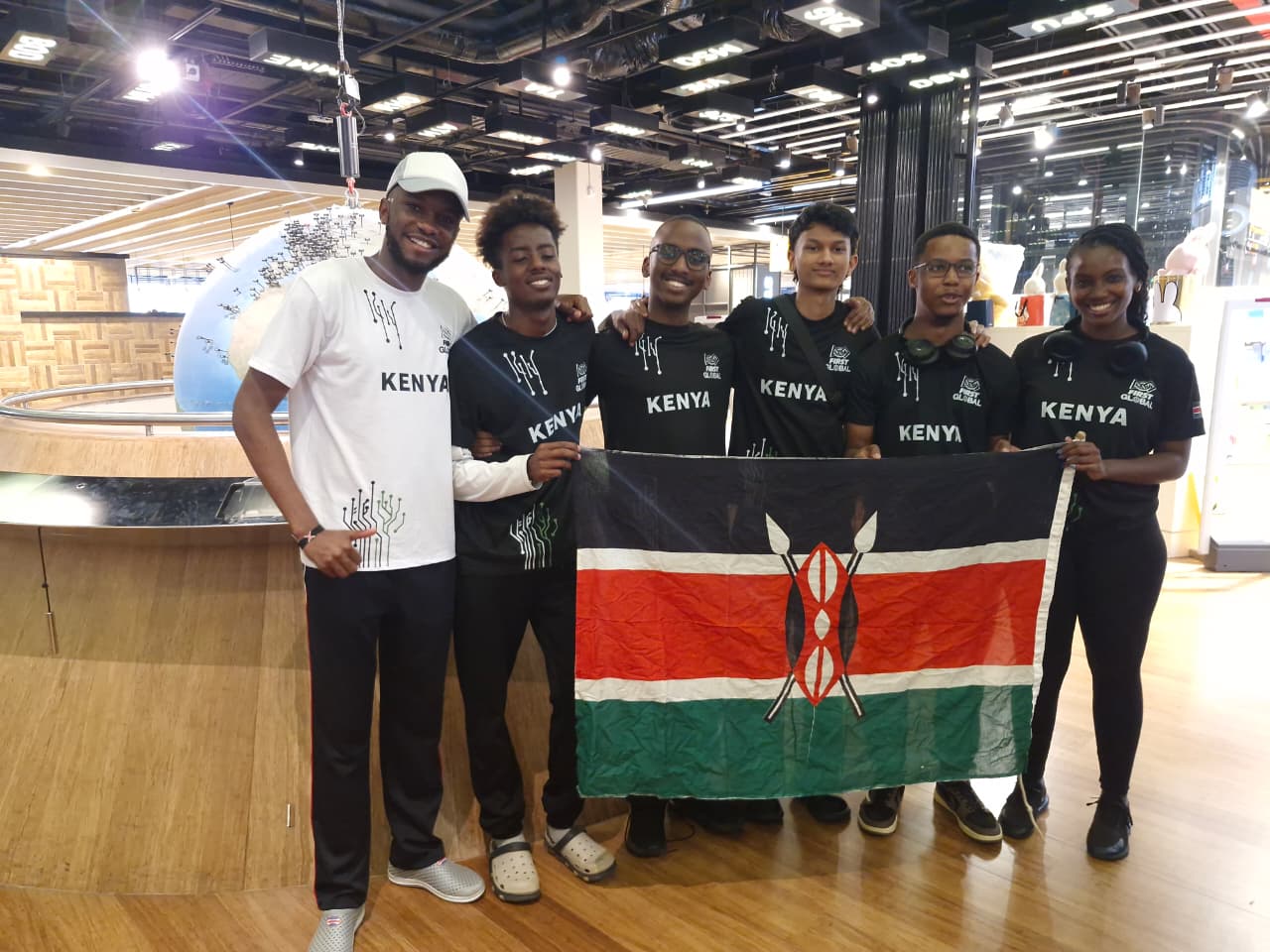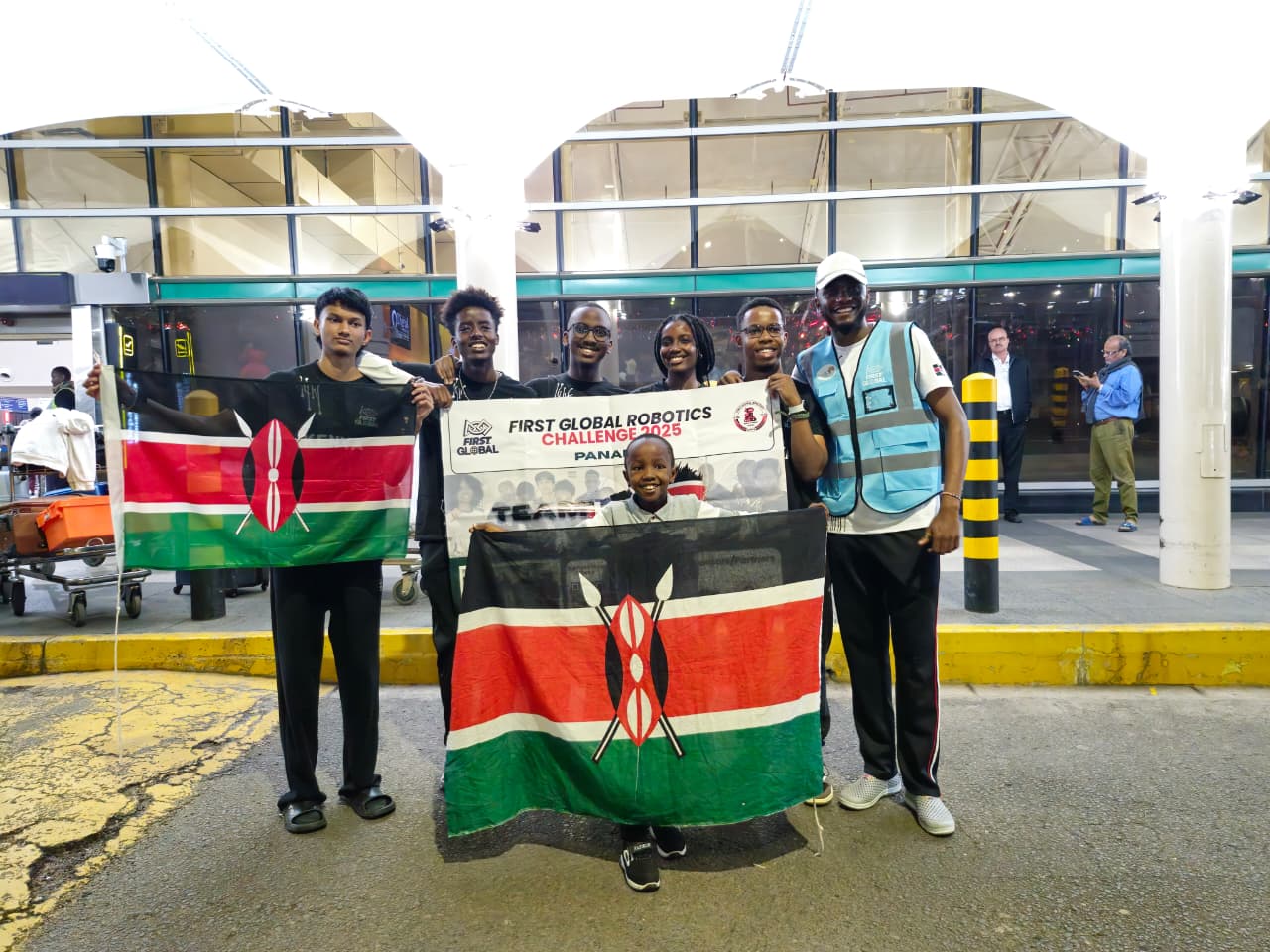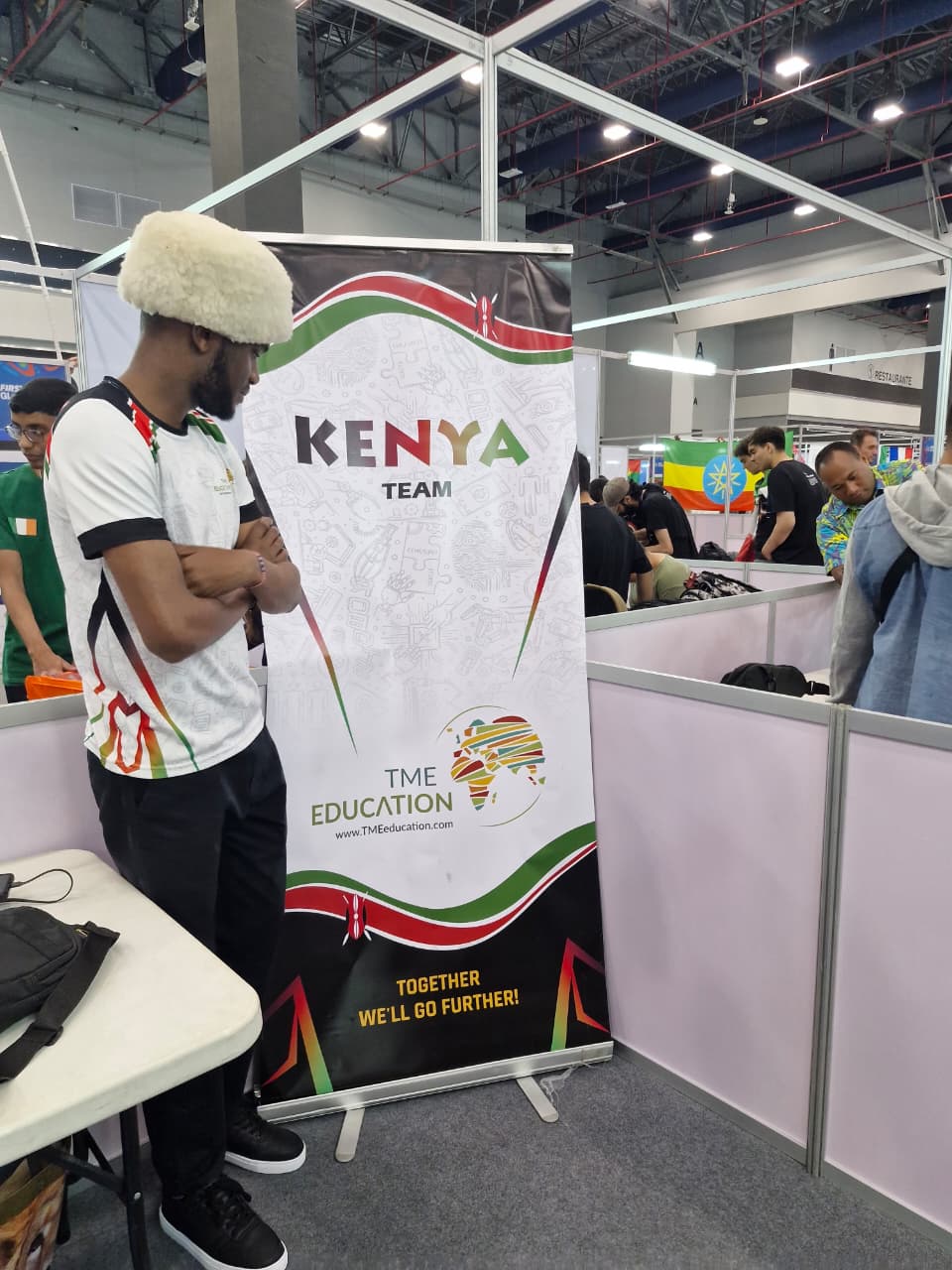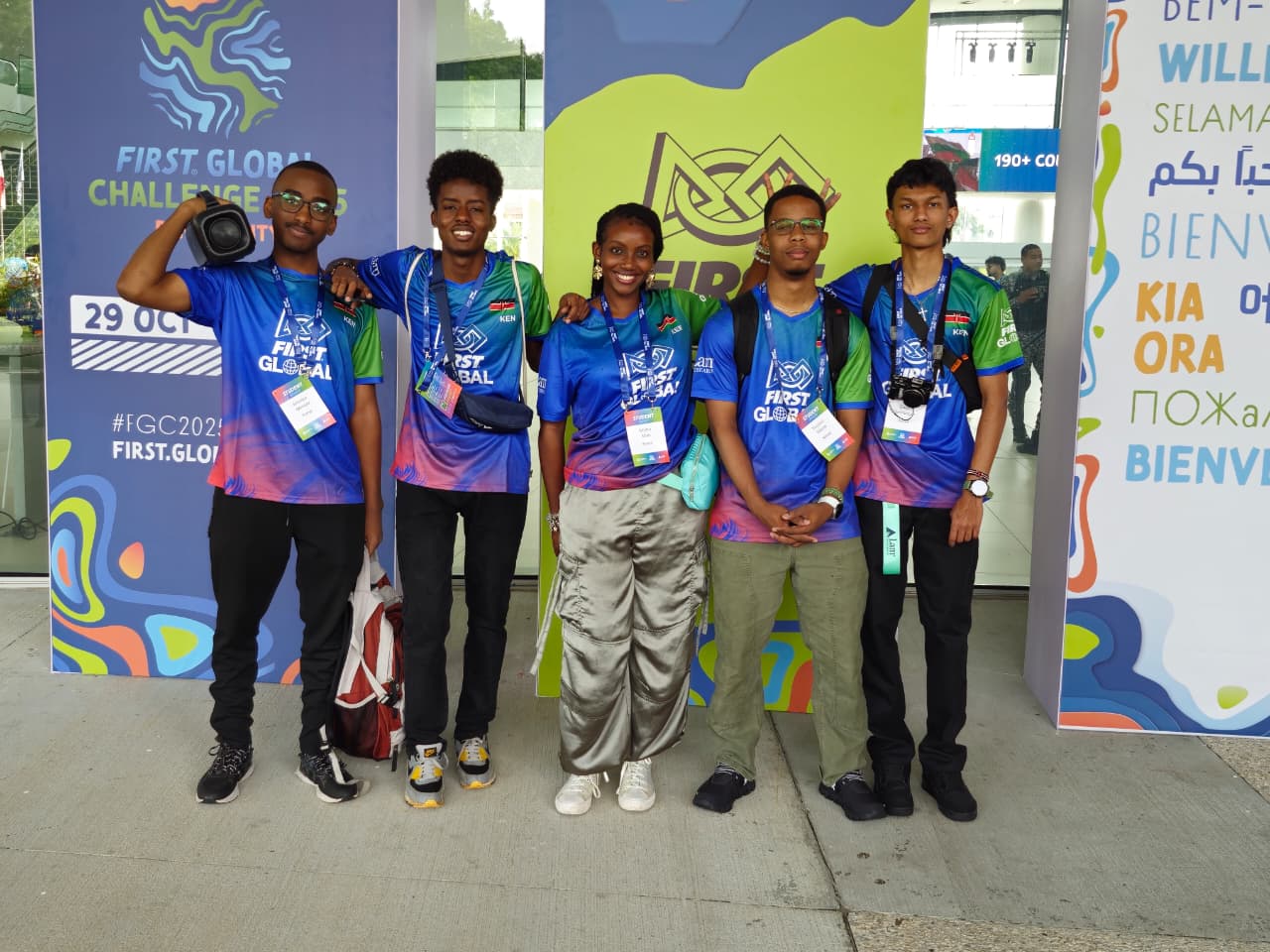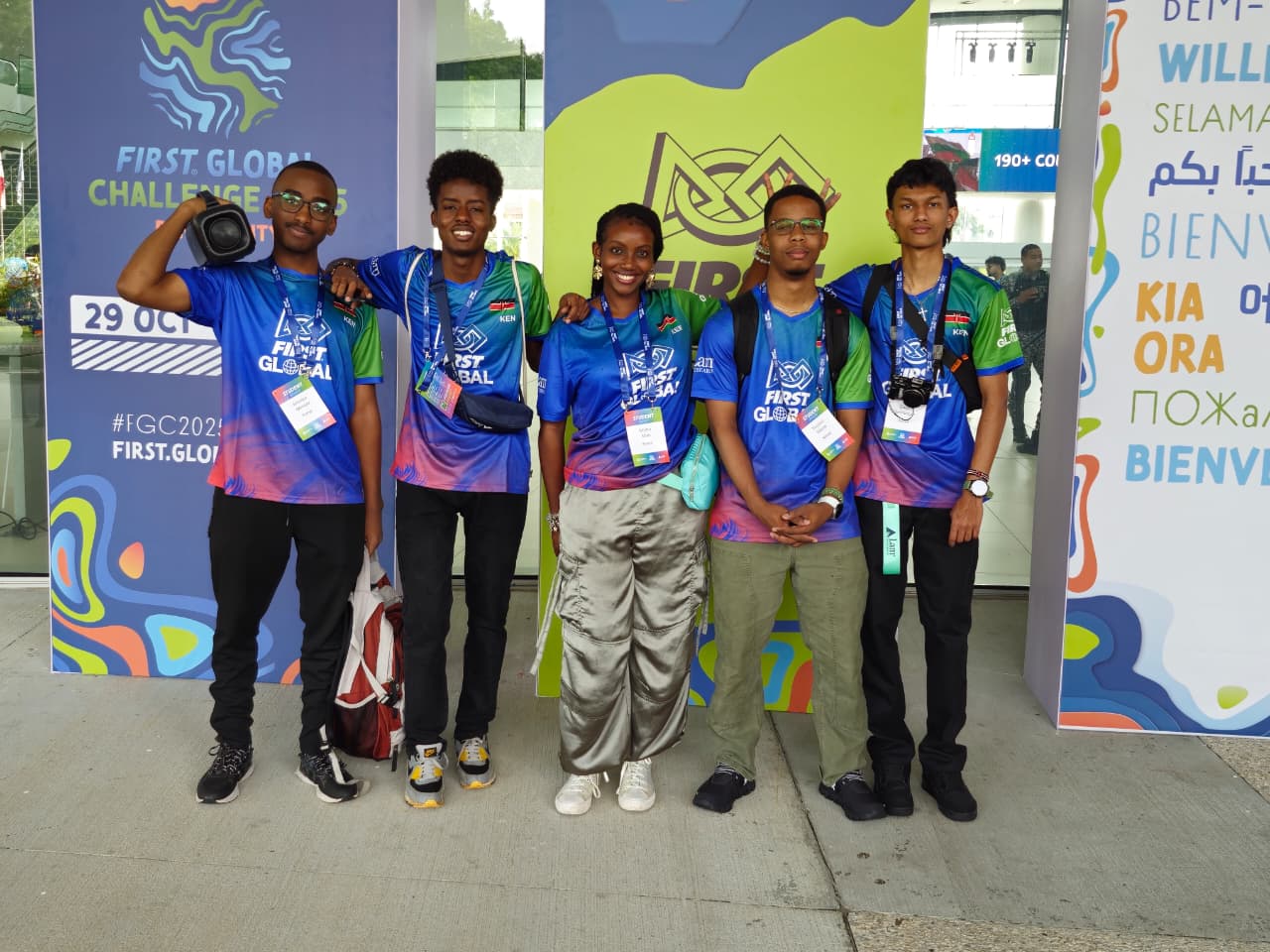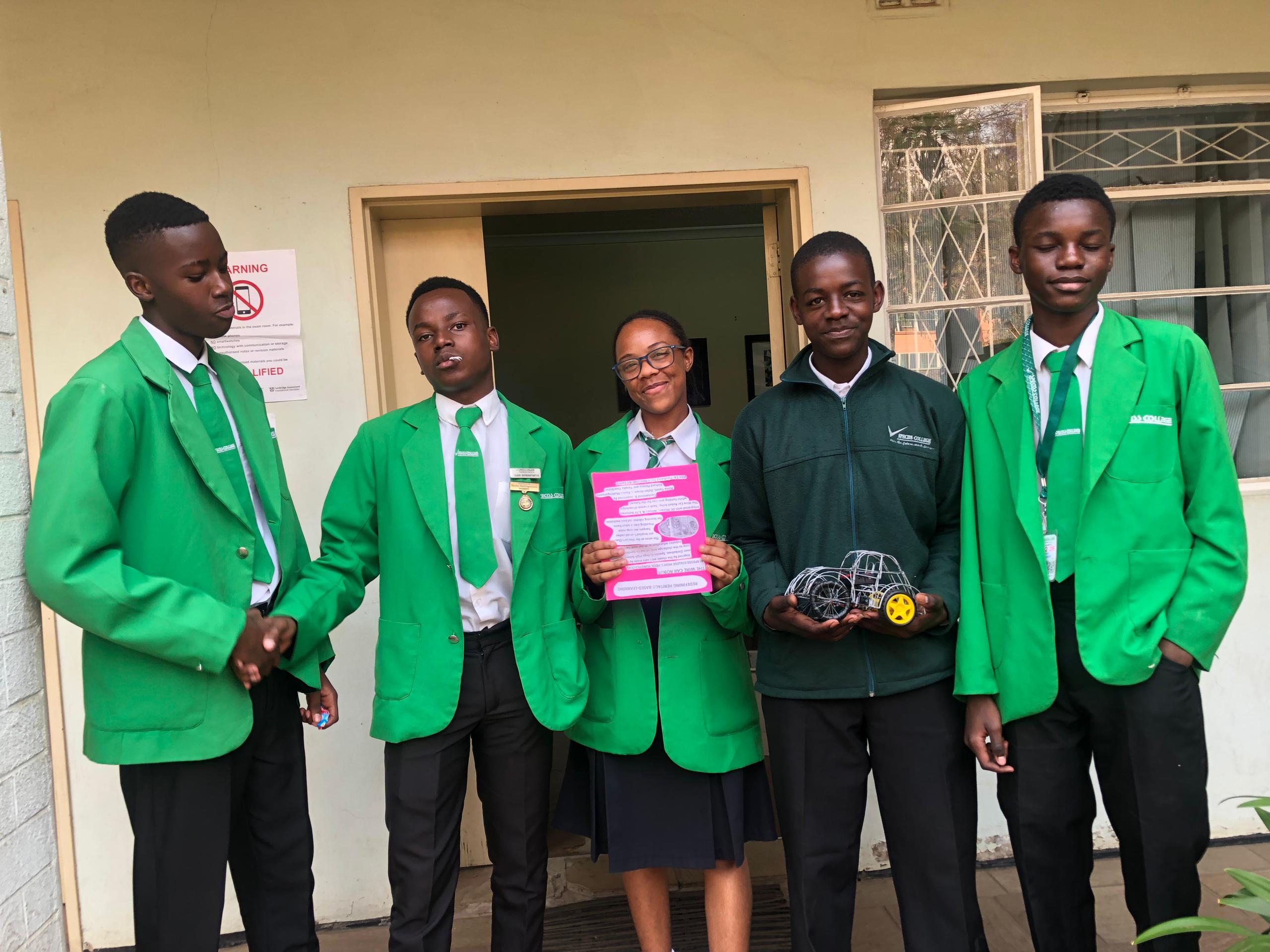BACKGROUND HISTORY
TME Education Kenya has actively participated in various STEM and robotics competitions both locally and internationally. This year, the TME Education Kenya Ambassador led a team from Zetech University to compete in the Pan African Robotics Competition (PARC) held in Senegal, where they showcased advanced AI and robotics solutions. In addition to PARC, TME Education Kenya also took part in other competitions such as AI For Good Competition. Moreover, TME Education Kenya tutors also participate in these competitions, providing an excellent opportunity for both students and mentors to gain valuable exposure, experience, and confidence.
ABOUT FIRST GLOBAL
FIRST Global is a non-profit organisation whose mission is to empower the world’s youth to become changemakers through STEM and robotics. They host an annual “Olympic-style” robotics competition, the FIRST Global Challenge, which invites one national team from nearly every country to design and build robots to address real global themes. For 2025, the FIRST Global Challenge took place in Panama City, Panama from 29 October to 1 November 2025 The theme for 2025 was “Eco Equilibrium”which focused on biodiversity and environmental balance. Students from 190+ national teams participated, building and programming robots to complete tasks aligned with the theme, and also engaging in cultural exchange and collaboration.
TEAM KENYA 2025
Team Kenya consisted of 15 students — 5 girls and 10 boys — all teenagers, with most being in high school and some having recently completed their studies and entered college. The team spent several months preparing under the guidance of mentors to design and build the competition robot. All participating teams received a standard robotics kit, which they used to assemble and program their robots. Before the competition, teams interacted virtually, sharing ideas and fostering global collaboration and teamwork.
THE COMPETITION
1.1 GAME DESIGN
This year’s FIRST Global Challenge was designed around the theme Eco-Equilibrium, where robots were required to collect, sort, and deliver game elements that represented different components of an ecosystem. The objective of the game encouraged teams to engineer robots capable of precise manipulation, efficient mobility, and strategic decision-making under time pressure. Each match consists of two phases: the Global Alliance phase and the Regional
Alliance phase. All six teams in a match begin by working together as a Global Alliance to restore planetary health by removing barriers (grey balls) from ecosystems and maximizing biodiversity units (multicolored balls). After this, teams compete in their Regional Alliances—groups of three (red and blue)—to ensure long-term protection of biodiversity. At the start of the match, each ecosystem contains three barriers, and each dispenser holds 60 biodiversity units. Robots begin in their regional zones, and when the match starts, all robots collaborate to remove barriers from the ecosystem and place them into the mitigators. Each barrier successfully placed earns 1 point for all six teams, demonstrating the shared global benefit of restoring ecological balance. Once the barriers are cleared robots collect and score biodiversity units, which represent species richness in ecosystems. These units are dispensed automatically from the dispensers, and teams can increase the dispensing speed by rotating the Accelerator. Depending on how long the Accelerator is activated, the system increases from low → medium → high dispensing rates, rewarding robots that put in extra effort to accelerate ecological restoration. Throughout the match, both robots and human players may add biodiversity units to ecosystems, helping to maximize regional and global scores. The game blends cooperation and competition, emphasizing how global unity and regional action work together to protect biodiversity and maintain a healthy planet.
1.2 TEAM KENYA ROBOT
Team Kenya’s robot was designed and built over several months using the standard FIRST Global kit. The robot featured a robust intake system for gathering game pieces during matches. The build process combined mechanical engineering, electronics integration, and extensive programming. It was guided by mentors while allowing students to take full ownership of the design. During the competition, the robot demonstrated high reliability and consistent performance across all 12 ranking matches. Its speed, stability, and scoring accuracy made it a strong alliance partner. The team executed well-planned match strategies, adapted quickly to alliance dynamics, and maintained excellent coordination with other national teams. These strengths contributed to Kenya being selected for the round-robin playoffs and ultimately finishing as part of the second winning alliance, marking the country’s best-ever performance at the competition.
1.3 SCORING
Each match in the FIRST Global Eco Equilibrium challenge lasts 2 minutes and 30 seconds, requiring teams to work with speed, precision, and strategy. In the final 30 seconds, ropes are released from the overhead bars, giving robots the opportunity to climb and earn valuable protection multipliers based on how high they ascend. Robots can score at different climbing levels—ranging from maintaining partial contact with the ground to being fully suspended by the rope, with higher levels offering greater point rewards. Team Kenya’s robot consistently executed strong end-game climbs, demonstrating stability, grip precision, and reliable mechanical control. This dependable rope-climbing ability contributed significantly to the team’s overall ranking and played an important role in securing their position in the second winning alliance.
TEAM KENYA RESULTS
Team Kenya’s performance at the FIRST Global Challenge was outstanding. Competing against more than 190 national teams , the Kenyan team secured silver, finishing as part of the second winning alliance alongside Malta, Lithuania and Serbia. Beyond the medal, the experience gave the students invaluable skills in problem-solving, collaboration, and global networking.
EVENT SUMMARY
TME Education was well represented by ambassadors from Kenya, Cameroon, and Mauritania. The performance of the teams was excellent, showcasing the high level of talent and dedication within the TME Education community. The event also provided valuable networking opportunities for the TME Education team and served as a platform for knowledge exchange and collaboration. Overall, it was a highly impactful experience, offering great exposure and inspiration to the participating students.



